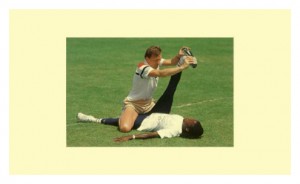Physical Therapy is a beneficial way to help diminish pain in the soft tissues, restore weakened muscles and improve groin, pelvis, hip and leg strength and mobility. The type of physical therapy and the duration will be dependent on the extent of your sports hernia. Acupuncture, massage or chiropractic sessions have also been known to reduce pain and improve muscle and bone alignment experienced with groin pain.
Once your sports hernia pain starts to decrease (within a few weeks), a physiotherapist will also set up an individualized strengthening and stretching exercise program for you to improve the condition of your abdominal, pelvic, groin, hip and leg muscles. This will also include endurance activities such as water exercises and/or swimming, stationary cycling, and power walking. Your program will be based on your needs and abilities, and will help to improve your range of motion and allow you to return to performing your normal routines. Individuals will often exercise or lift weights on their own to try and build up their strength; however in doing so, they can do more damage. It is extremely important to restore your range of motion, and to stretch and strengthen your muscles properly as they may have weakened during the period of non-use. A personal trainer or physiotherapist will help to ensure your rehabilitation process is effective. For best, long-term results use Blood Flow Stimulation Therapy™ (on the hip and thigh) in conjunction with physical therapy and an exercise program.
To increase your comfort and prevent further damage you may want to use a groin and/or upper thigh support, brace or compression short which will help support the area, and eliminate pulled abdominal, upper thigh and groin muscles, reducing stress on the injured tissue. Some of these are also designed for heat retention to prevent further strain. These can be used until your injury is gone or during contact/active sports for additional stability. However they should not be worn at all times, as they can limit muscle development, cut off circulation and impede healing of your muscle tissue.
Evaluate how you use your groin, stomach, hip and thigh muscles in daily activities to determine if you can decrease stress on your tissues (eliminate sudden twisting and turning motions if possible). This may involve changing your technique and/or using correct or supportive equipment (proper shoes, mobility aids) to help you perform them more effectively and safely. Taking more frequent breaks during your work or activities can also alleviate stress. Speak with an occupational therapist or a professional in your specific activity or work setting to get the proper information.

